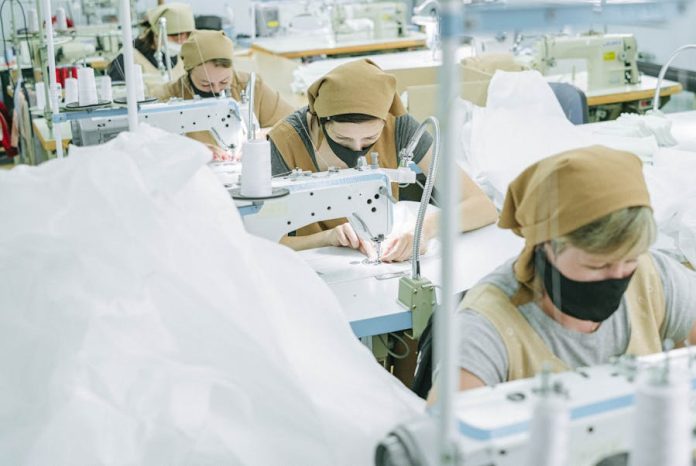Textile processing involves a series of steps that transform raw fibers into finished fabrics. Throughout this journey, various chemicals play crucial roles in enhancing the quality, durability, and aesthetic appeal of textiles. This comprehensive guide delves into the chemicals used in textile processing, their functions, and their impact on the environment and human health.
Introduction to Textile Processing
Textile processing encompasses several stages, including spinning, weaving, knitting, dyeing, printing, and finishing. Each stage requires specific chemicals to achieve the desired outcomes. Understanding these chemicals is essential for both textile manufacturers and consumers who seek sustainable and safe products.
Common Chemicals Used in Textile Processing
1. Dyes and Pigments
Dyes and pigments are fundamental in textile processing, providing the vibrant colors that make fabrics appealing. There are several types of dyes, including:
- Reactive Dyes: Used primarily for cotton and other cellulosic fibers.
- Disperse Dyes: Suitable for polyester and other synthetic fibers.
- Acid Dyes: Applied to wool, silk, and nylon.
- Basic Dyes: Used for acrylic fibers.
Pigments, on the other hand, are insoluble colorants that are often used in printing processes.
2. Bleaching Agents
Bleaching agents are used to whiten fabrics and remove impurities. Common bleaching agents include:
- Hydrogen Peroxide: A versatile and environmentally friendly bleaching agent.
- Sodium Hypochlorite: Effective but can be harsh on fabrics and the environment.
- Sodium Chlorite: Used for its strong oxidizing properties.
3. Finishing Agents
Finishing agents enhance the performance and appearance of textiles. Some common finishing agents are:
- Starch and Dextrin: Used for sizing to improve the weaving process.
- Silicones: Provide softness and water repellency.
- Fluorocarbons: Used for stain and water resistance.
- Formaldehyde Resins: Improve wrinkle resistance and dimensional stability.
4. Surfactants
Surfactants are used in various stages of textile processing, including scouring, washing, and dyeing. They help in removing impurities and improving the penetration of dyes and other chemicals. Common surfactants include:
- Anionic Surfactants: Such as sodium lauryl sulfate.
- Nonionic Surfactants: Like ethoxylated alcohols.
- Cationic Surfactants: Used for their antimicrobial properties.
5. Catalysts and Auxiliaries
Catalysts and auxiliaries facilitate chemical reactions and improve the efficiency of textile processing. Examples include:
- Enzymes: Used for desizing and bio-polishing.
- Acids and Alkalis: Adjust pH levels for optimal chemical reactions.
- Reducing Agents: Such as sodium hydrosulfite, used in bleaching and dyeing.
Environmental and Health Impacts
While chemicals are essential for textile processing, their use can have significant environmental and health impacts. Some key concerns include:
1. Water Pollution
Textile processing generates large volumes of wastewater containing dyes, surfactants, and other chemicals. These effluents can pollute water bodies, affecting aquatic life and human health.
2. Air Pollution
Certain chemicals, such as formaldehyde and volatile organic compounds (VOCs), can release harmful fumes during processing. These emissions contribute to air pollution and respiratory issues.
3. Soil Contamination
Improper disposal of textile waste can lead to soil contamination, affecting agricultural productivity and ecosystems.
4. Health Risks
Exposure to textile chemicals can pose health risks to workers and consumers. Allergic reactions, skin irritations, and respiratory problems are common issues. Some chemicals, like formaldehyde, are known carcinogens.
Sustainable Practices in Textile Processing
To mitigate the environmental and health impacts of textile processing, the industry is adopting sustainable practices. These include:
1. Eco-Friendly Chemicals
Using eco-friendly and biodegradable chemicals can reduce the environmental footprint of textile processing. For example, enzymes and natural dyes are gaining popularity.
2. Wastewater Treatment
Implementing advanced wastewater treatment technologies can help remove harmful chemicals before discharge. Techniques like membrane filtration, biological treatment, and chemical coagulation are effective.
3. Recycling and Reuse
Recycling textile waste and reusing chemicals can conserve resources and reduce pollution. Innovative recycling technologies are being developed to convert textile waste into new products.
4. Regulatory Compliance
Adhering to environmental regulations and standards ensures that textile processing is conducted responsibly. Certifications like OEKO-TEX and GOTS (Global Organic Textile Standard) promote sustainable practices.
Conclusion
Chemicals play a vital role in textile processing, enhancing the quality and performance of fabrics. However, their use must be balanced with environmental and health considerations. By adopting sustainable practices and using eco-friendly chemicals, the textile industry can minimize its impact on the planet and ensure the safety of workers and consumers.
As consumers, we can support sustainable textile processing by choosing products made with eco-friendly chemicals and certified by reputable organizations. Together, we can contribute to a greener and healthier future for the textile industry.
FAQs
What are the most common chemicals used in textile processing?
The most common chemicals used in textile processing include dyes, pigments, bleaching agents, finishing agents, surfactants, catalysts, and auxiliaries.
How do textile chemicals impact the environment?
Textile chemicals can impact the environment through water pollution, air pollution, and soil contamination. Improper disposal of waste can harm ecosystems and human health.
What are some sustainable practices in textile processing?
Sustainable practices in textile processing include using eco-friendly chemicals, implementing wastewater treatment, recycling textile waste, and adhering to environmental regulations.
How can consumers support sustainable textile processing?
Consumers can support sustainable textile processing by choosing products made with eco-friendly chemicals and certified by reputable organizations like OEKO-TEX and GOTS.
What are the health risks associated with textile chemicals?
Exposure to textile chemicals can pose health risks such as allergic reactions, skin irritations, respiratory problems, and even cancer. Proper handling and disposal of chemicals are crucial to minimize these risks.


